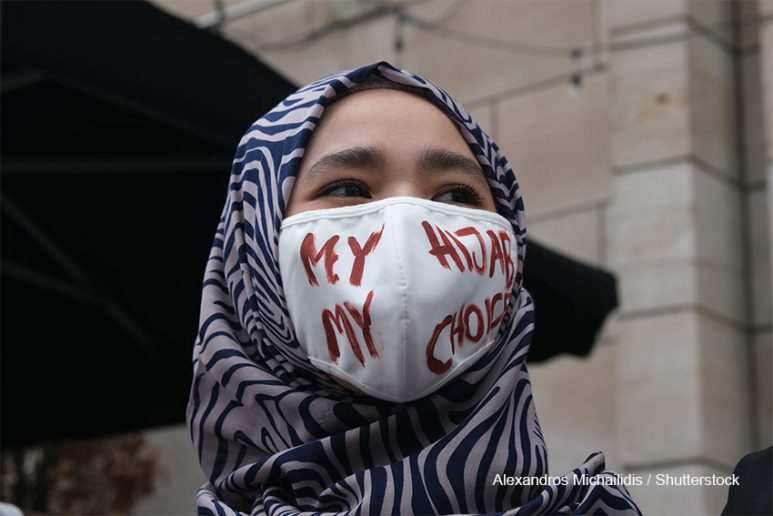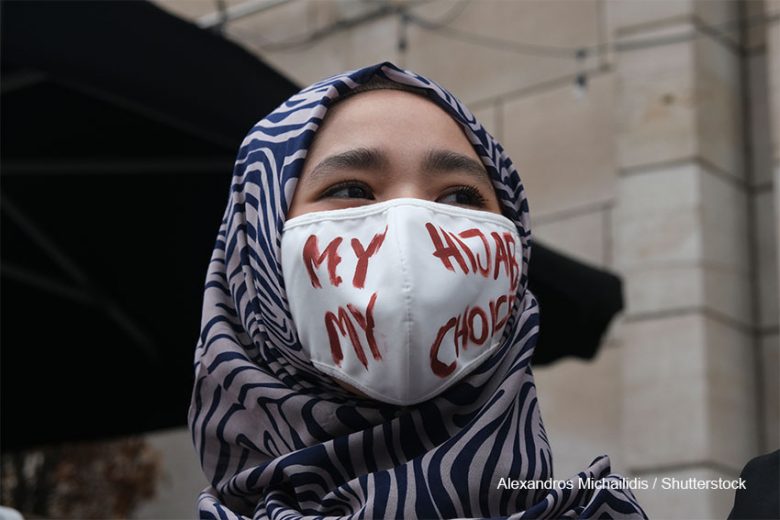By Anmol Irfan
On 15 July, the European Union’s top court reaffirmed a 2017 ruling that allowed employers to ban the hijab in the workplace. The ruling came after cases were brought to the court when two Muslim women in Germany – a special needs childcare worker and a sales assistant in a chemist – were told to remove their hijabs at work. Both the women did not previously wear the hijab and decided to do so when they returned from parental leave. After warnings, the women faced suspensions and being told they could only return if they came to work without it, at which point they took the matter to court. However, the court justified taking the side of the employers over an argument of maintaining ‘neutrality’.
“A prohibition on wearing any visible form of expression of political, philosophical or religious beliefs in the workplace may be justified by the employer’s need to present a neutral image towards customers or to prevent social disputes,” a statement by the court said.
Much like the focus of the court statement on protecting the employer, it seems media outlets are jumping onto the same bandwagon. Coverage by major outlets, including Reuters and the Guardian, present the women as a passive part of the whole situation with a majority of the focus on the company, its rights and the role it played. That is not to say that most coverage has taken sides, because it has not. In fact the same concept of ‘neutrality’ that the court’s judgement was based on seems to be influencing media coverage as well. It may be so neutral that it is just about flown under the radar it seems. Writer and editor of It’s Not About The Burqa, Mariam Khan , took to Twitter to talk about the reaction to the EU ban as compared to the recent incident of the Norwegian volleyball team being fined when they wore shorts instead of bikini bottoms. Khan points out that while the Norwegian team was appreciated and supported globally for exercising their right, Muslim women’s fight and autonomy is being erased because it is not being recognised. Her words strike deep as a reminder of the power the media has in presenting such cases and pushing for change.
But as Khan points out, media coverage of the EU ban demanded little in terms of change. In fact when asked what she thought about media reporting of the incident, Diversity, Inclusion and Belonging Consultant Vanessa Belleau, said little stood out because it was all the same. Nothing has completely stood out to be honest.
“A lot of the headlines covered a similar angle and focussed on companies’ rights with headlines like ‘EU companies can ban employees wearing headscarves, court rules”.” Belleau tells Media Diversity Institute.
“Some coverage I did think was a bit different was from the Independent and Forbes. Their headlines felt somehow more compassionate and focussed on people, especially Muslim women more,” she adds.
Belleau believes that even anchoring the ruling in the concept of neutrality itself is wrong. Neutral stances often lead towards the dominant narrative and in this case the court’s ruling allows workplaces to maintain a supposed neutrality at the behest of their employees and their freedoms. When media outlets ignore the latter and only focus on maintaining neutrality they fail to represent what one person’s neutrality can mean to others, particularly those who are a part of marginalised communities.
Sonya Barlow founder of global social enterprise LMF Network also points out that this supposed neutrality in the media can in fact be dangerous.
“While I understand that journalism is a profession where objectivity must prevail, I have failed to see publications or comments from all those companies that pledged to support diversity and inclusion. I haven’t seen many dissenting voices that speak out against this dangerous precedent against what is basically a legitimisation of racism and Islamophobia.” Barlow says, adding that support of these actions “open the door for employers to be openly discriminatory with the full support of the law.”
The impact of the media cannot be denied, as reporting perspectives can influence both policy, and lay people’s opinions of the situation as well. By completely glossing over the impact this will have on the lives and experiences of the women who are banned from wearing the hijab, the media is removing them from the narrative and failing to complete their responsibility by putting forth the complete picture. Khan is also right in pointing out how painfully obvious this lack of support from mainstream media has been in light of the case against the Norwegian volleyball team. While their decision to change the dress is being applauded – and rightfully so – Muslim women’s standing up against hijab bans is being portrayed as going against neutrality and their right to practice religion is therefore being villanised, even if only indirectly.
Both Barlow and Belleau are clear on one thing, the media needs to change its stance.
“Instead of framing this decision as reinforcing secularism in EU countries, it should be reported and condemned for what it is: an obvious, ugly action of Islamophobia. They need to stand up and help shift the negative connotations of wearing the hijab. It is a matter of identity for Muslim women, not a demonstration of extremism. Furthermore, the media shouldn’t reinforce ideas on what is appropriate for women to wear, especially based on prejudiced and biased opinions,” Barlow tells Media Diversity Institute.
Belleau further believes that there is a direct shift needed in order to highlight the lives of Muslim women who wear the hijab to challenge the narrative that has been formed.
“The media can focus on telling the stories of women wearing the headscarf, who are just trying to be themselves, possibly the best versions of themselves,” she says.
Useful Resources
Get The Trolls Out!, a project led by Media Diversity Institute strives to encourage young people to combat discrimination and religious intolerance in Europe. It monitors online hate speech and using the findings to challenge the perpetrators or debunk inflammatory rhetoric. Get The Trolls Out! has developed various resources relevant to the ‘Get the Trolls Out’ campaign to combat diverse forms of hate speech, including antisemitism, Islamophobia, anti-Christian sentiment, and attempts to turn public opinion against migrants and asylum-seekers.
Photo Credit: Alexandros Michailidis / Shutterstock


